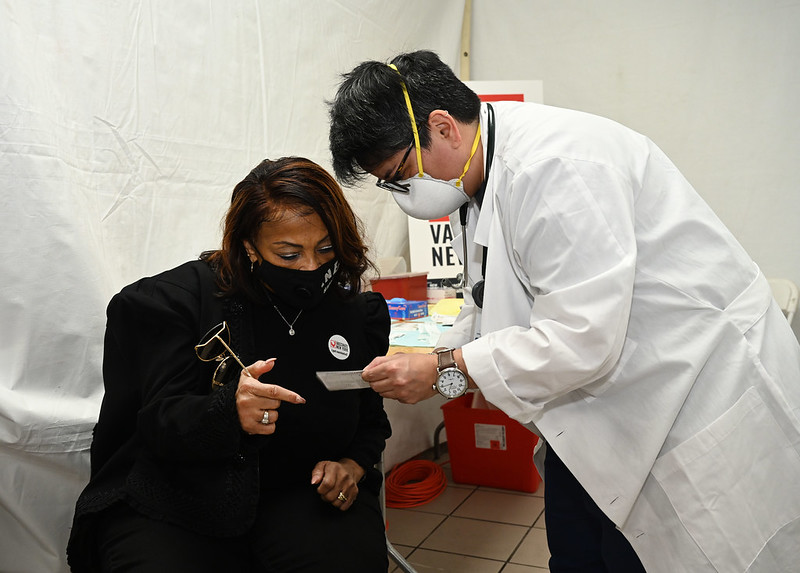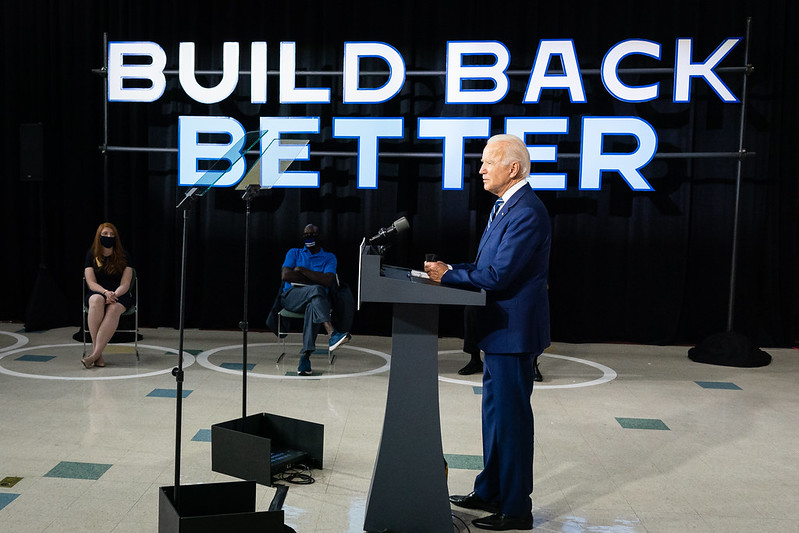A Clean Slate in New York

(photo: Mike Groll/Office of Governor Andrew M. Cuomo)
Around the world those who share my faith are celebrating Easter, the essence of which is finding new life and moving past that which could have destroyed us.
That is the core tenet of our faith and, because of this credo, we are called to both celebrate second chances and participate in the triumphs over daily oppressions.
Yet unfortunately, we make renewal and redemption nearly impossible for far too many of our neighbors. Take the 2.3 million New Yorkers who have a conviction history. Under our current system, they are punished long after completion of their sentences and endure a lifetime of difficulty in finding jobs, accessing housing, getting into educational programs, and obtaining countless other opportunities.
This is a system that is designed to make people fail, but we finally have a chance to write a new story together. That starts with passing Clean Slate legislation in Albany this year, which would put an end to this perpetual punishment by automatically expunging New Yorkers’ conviction histories after a period of time.
This is a fight that is rooted in human dignity and fairness. When people return home from jail or prison, they find themselves facing a second sentence. Employers, schools and landlords often want nothing to do with someone who has a conviction history. They will quickly toss an application or resume aside and assume the worst, leaving a supposedly free person chained to the past.
Where is the fairness or justice in this? We are not providing our friends and family a chance at renewal, but instead a lifetime of blocked opportunities. This sets off a predictable cycle that can lead to poverty and homelessness, often putting people right back in jail or prison.
Nobody should be permanently judged by their worst moments — and certainly not when those moments are often the result of over-policing and excessive prosecution. We know that the criminal legal system is deeply unequal and disproportionately criminalizes people of color. Repairing the damage of an unjust system begins with erasing the collateral consequences of having a criminal record.
Rather than pushing away our community members with conviction histories, we should be embracing them when they return home. The emotional, social and economic toll of incarceration is enormous, and it can take years for someone returning home to get back on their feet.
But we all benefit when folks can get back on their feet. It means stronger communities, a broader applicant pool for employers, greater economic growth for our state, and increased community safety for all.
This can only be accomplished by eliminating the stigma and collateral damage of conviction records, which is where Clean Slate comes in.
Currently, the onus is on individuals to participate in a complicated and protracted application-based process if they want to clear their records. As a result, very few New Yorkers are able to actually complete this process, particularly if they do not have legal representation. The Clean Slate legislation in Albany would ensure everyone is given this life-changing relief, irrespective of their ability to navigate the application process or afford a lawyer. Under Clean Slate, an individual’s conviction would be automatically sealed, and later expunged, after completion of their sentence.
Though we often preach redemption, it is not reflected in our laws. For far too long, we have failed our friends, family members and neighbors who have struggled after returning home from incarceration.
But we have the power to address this injustice. The moral imperative to do so is clear and pressing.
We can write a story where everyone can secure employment, steady income, stable homes, and other vital opportunities. We can write that story together by supporting the Clean Slate campaign.
In the spirit of this season of resurrection, let’s fight for the freedom to find new life on the other side.
***
Rev. Kevin VanHook is the Minister of Justice, Advocacy, and Change at Riverside Church. On Twitter @RiversideNYC.
***
Have an op-ed idea or submission for Gotham Gazette? Email This email address is being protected from spambots. You need JavaScript enabled to view it.
Legislators in Healthcare: State Budget Can’t Jeopardize Covid Recovery and Public Health

(photo: Kevin P. Coughlin/Office of Governor Andrew M. Cuomo)
As health-care professionals we know COVID-19 is unprecedented, but as legislators we know budget cuts are not. Despite the immeasurable impacts of COVID-19, Governor Cuomo’s Fiscal Year 2022 Executive Budget proposes cuts to critical health-care funding for New York State. Our experience in health care makes us uniquely attuned to the disproportionate impact that this budget would have on low-income and working class New Yorkers. As we plan a recovery for COVID-19, we cannot turn our backs on the very workers that made sure our state functioned during a global pandemic. As we come to a final agreement on an adopted budget for the new fiscal year, New Yorkers need an equitable budget that prioritizes public health and implements proactive practices to respond to future health emergencies.
Since the first reported case of COVID-19 in New York, nearly 40,000 New Yorkers have died after contracting the virus. Rather than continuing to do business as usual, we must transform our approach to public health to prioritize culturally-competent and population-specific care. New Yorkers are unique; a one-size-fits all approach to health care will no longer suffice. Over the past year, it has become exceedingly clear that in the face of a global pandemic, underlying health inequities are life-threatening for certain populations.
For decades, Article 6 programs have been providing a range of life-saving, hyper-local, community-centered programs to specific populations, promoting public health, and addressing concurrent health epidemics, including HIV and the opioid crisis. While on the front lines, we witnessed the immense impact of Article 6 funded programs on individuals that would otherwise go without essential care. It is unfathomable that this funding be jeopardized, especially during a global pandemic.
It is in this spirit that we advocate for the adopted budget to invest in a just recovery for New York and the continued health of New Yorkers by increasing Article 6 reimbursement rates in five boroughs of New York City to 36%, the same rate as other New York State counties. At the very minimum, reimbursement must continue at 20%; anything less would disproportionately affect communities that have been hardest hit by COVID-19 and are already struggling to regain some semblance of their overall wellbeing.
With unemployment rates exceptionally high, the rising cost of health care continues to be a burden for New Yorkers. Over the last year we have witnessed an increase in demand for publicly-funded health-care plans and subsidized care, likely due to rising unemployment, loss of income, and termination of employer-funded health insurance. During a time when New Yorkers are relying most on the government to deliver, it would be irresponsible to cut funding to Medicaid, indigent care, and safety net hospitals throughout the state, including New York City Health + Hospitals (H+H). H+H is the largest public safety net hospital in the nation, and for many New Yorkers, primarily undocumented and uninsured individuals, the only option for affordable and accessible health care. The decision to reduce state funding to H+H by nearly $500 million over two years, and reduce funding to safety net providers, ignores the reality of our current public health crisis and sends the message that elderly, low-income, undocumented, or otherwise uninsured individuals do not deserve access to quality health care.
To truly recover from this pandemic, we must ensure that every New Yorker has access to primary care and life-saving services. The New York State Medicaid program has a long history of providing high-quality, comprehensive health-care coverage and access to services for low-income immigrant communities and people with disabilities. To continue this tradition, we must protect H+H and other safety net hospitals by eliminating the governor’s proposed reductions to Medicaid, Managed Care, and Long Term Care services and Indigent Care pools in the Executive Budget.
As we approach a final agreement on a new budget, these must be priorities.
Centering the needs of the most vulnerable is essential in health care. As legislators, we bear a similar responsibility: to protect our constituents in the face of threats to their wellbeing. At this moment, caring for New Yorkers means securing a budget without cuts to health care or public health programs, responding to the needs of New Yorkers and forging a path to a healthier future.
***
Assembly Members Phara Souffrant Forrest, Karines Reyes, and John T. McDonald III represent parts of Brooklyn, the Bronx, and the Capital Region. On Twitter @phara4assembly, @KarinesReyes87, & @johnmcdonald108.
***
Have an op-ed idea or submission for Gotham Gazette? Email This email address is being protected from spambots. You need JavaScript enabled to view it.
Taking President Biden’s Equity Lens from the American Rescue Plan to Jobs and Infrastructure

Joe Biden on the trail (photo: Adam Schultz/Biden for President)
For most wealthy families, the pandemic was a minor economic hiccup. Millionaires and billionaires profited, especially in New York. But for most poor families, COVID-19 was an unprecedented financial blow with impacts that could last for generations. Thankfully, help is on the way with the American Rescue Plan (ARP). Beyond immediate relief, the ARP indicates more systemic economic policy changes for low-income people and children could be coming.
Beyond the $1,400 stimulus and $300 unemployment checks hitting bank accounts, President Biden’s $1.9 trillion ARP delivers almost two-thirds of its total financial benefit to low- and middle- income households. What makes the package a sizable economic boost is the temporarily expanded Earned Income Tax Credit (EITC) and Child Tax Credit (CTC). The EITC triples the maximum amount of the credit for childless working adults and raises the income limit to receive it. Childless adults — many who are low-wage earners, essential workers, and people of color — have historically been left out of most government aid and, as a result, are taxed deeper into poverty.
But the cherry on the ARP is the CTC, which is the closest the United States has ever come to guaranteeing a basic income for children.
Families with children under six years old will get up to a $3,600 benefit per child, while those with school-aged children can receive up to $3,000 per child, all of which will be fully tax refundable. This is a huge bump – at least 50% depending on income and family size – compared to the $2,000 credit families received last year, which was not fully refundable and did not include 17-year-olds. In all, the new law will provide cash assistance to over 90% of children – at least 66 million – for tax year 2021. This will help move 4 million of them out of poverty, 230,000 of whom are living in New York. The impact is expected to cut the poverty rates of Black and Latino children by half, a monumental feat.
Beyond size, the ARP reflects a systemic rethinking of social policy. It recognizes that children merit investment, regardless of the work status of their parents, a historic shift from the ‘welfare to work’ policies of the Clinton administration. Several legislators, from Rep. Ritchie Torres in the South Bronx to Sen. Mitt Romney of Utah, want to make a version of the expanded CTC permanent. Such a move could be as instrumental in cutting child poverty as Social Security Income was for cutting elderly poverty in half in the 1990s.
The ARP is also a revolutionary act of economic justice for those in deep poverty long before the pandemic, but whose plight was neglected over time. It is through this equity lens that the government should tackle the next frontier – infrastructure.
While the ARP might keep low-income people and children afloat today, future infrastructure investments will determine the built environment our children will grow up, work, and live in for years to come. The ARP already provides seed funding for this in New York through $12 billion for schools, $6 billion to New York City directly, and $6 billion for the MTA. State and local officials would be wise to use some of this funding as a catalyst now – notably for sorely needed NYCHA capital improvements and the city’s massive public transit deficiencies.
While President Biden’s ARP aimed to put out the economic fire raging across low- and middle-income households, his $2 trillion infrastructure proposal unveiled Wednesday -- the “American Jobs Plan” -- seeks to rebuild the house by investing in major infrastructure and workforce projects, from modernizing highways, roads, and public transportation, bridging the digital divide, and making critical investments in job training, among other projects. Of note, the plan includes several pots of money aimed at “underserved communities,” and includes language that reflects a commitment to advancing racial equity, including a $20 billion program for redressing discriminatory transportation policy and “reconnecting neighborhoods cut off by historic investments.”
While the proposal is said to be a work in progress and will be negotiated with Congress, Biden should take additional inspiration from infrastructure bills already circulating. Rep. Nydia Velazquez’s Public Housing Emergency Response Act would infuse $70 billion in funds for public housing, $30 billion of which would go directly to NYCHA, and Rep. Alexandria Ocasio-Cortez’s Green New Deal for Public Housing would invest $180 million over 10 years to train and mobilize the workforce to decarbonize the public housing stock, while creating an estimated 250,000 jobs. Both bills aim for infrastructure equity and address the climate crisis head on.
New York leadership should also take the lessons of the COVID-19 pandemic coupled with the damned legacy of Robert Moses to reorient itself to the infrastructure needs of low-income people of color, many of whom reside in the boroughs outside Manhattan. It is high time for a multi-polar public works program with a five-borough focus, centered on equity and redressing the harmful infrastructure projects of the past that divided neighborhoods and displaced communities based on race and wealth, from the Cross Bronx and Brooklyn-Queens expressways to the development of Lincoln Center. Investing in dilapidated schools, roads, bridges, bike lanes, and more in all the boroughs, rehabbing our decrepit public housing, and re-skilling our workforce to meet the needs of the 21st century economy, as automation and remote work will dominate the labor market in the years to come, would be a crucial jump-start.
***
Emerita Torres is Vice President of Policy, Research, and Advocacy at Community Service Society of New York. On Twitter @EmeritaTorresNY.
***
Have an op-ed idea or submission for Gotham Gazette? Email This email address is being protected from spambots. You need JavaScript enabled to view it.




